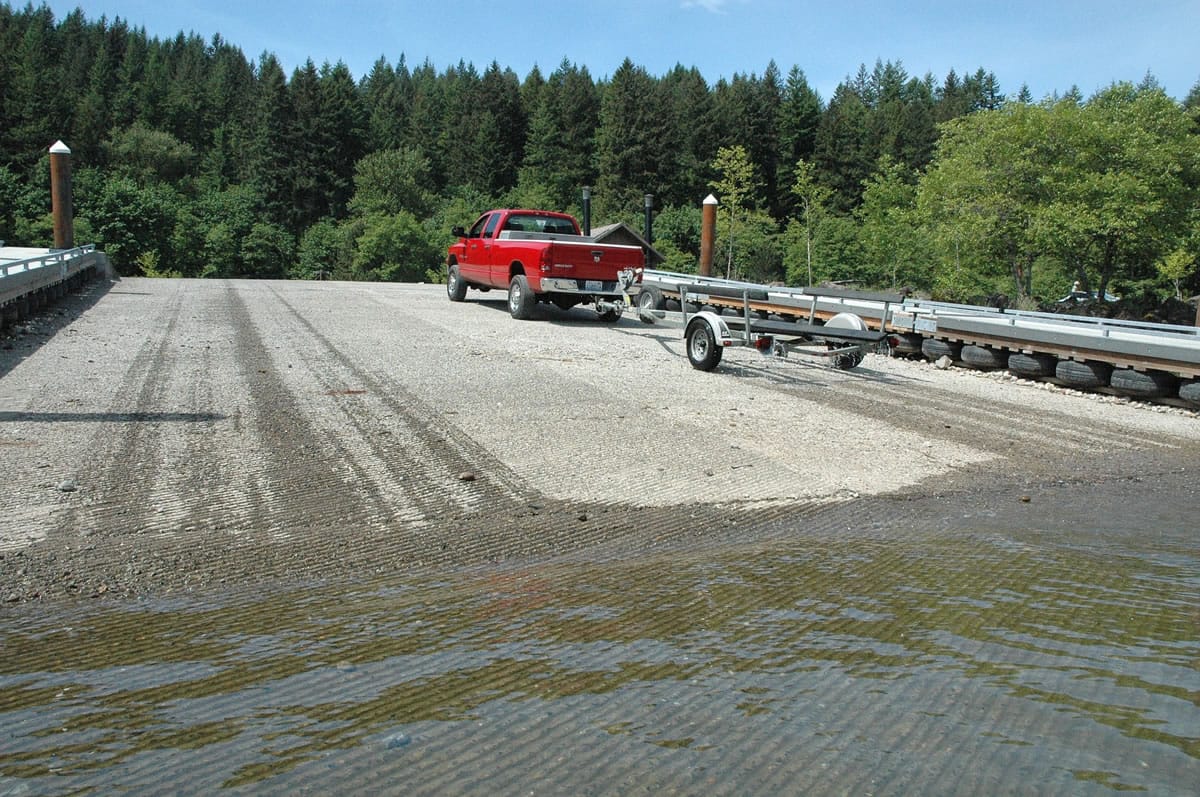ARIEL, Wash. — The drought is putting a squeeze on PacifiCorp, as the utility juggles competing uses for the streamflow of the North Fork of the Lewis River.
The snowpack in the drainage is only 10 percent to 20 percent of normal, according to Frank Shrier, principal scientist for PacifiCorp, at May’s meeting of the Lewis River Aquatic Coordination Committee.
“We’re looking at really poor conditions unless we get a cool, wet summer,” he said. “By July, the inflows are only expected to be 650 cubic feet per second.”
PacifiCorp has to balance between:
o Keeping winter steelhead spawning nests downstream of Merwin Dam covered until the young fish emerge from the gravel in mid-July.
o Having enough streamflow for the big population of wild fall chinook to spawn during autumn.
o Keeping enough water in Merwin, Yale and Swift reservoirs to have at least one boat ramp functional at each lake.
The federal license calls for a minimum flow of 2,700 cubic feet per second at Merwin Dam through June 30.
However, the Lewis River Flow Coordination Committee and Washington Department of Ecology agreed in April to reduce the flow at Merwin to 2,300 cubic feet per second.
The committee includes NOAA Fisheries, the U.S. Fish and Wildlife Service and Washington Department of Fish and Wildlife among others.
“The (dam) operators have asked to drop flows even more and we’ve said ‘no,”’ Shrier said. “Those steelhead redds barely have enough water now…We can’t drop the flows until the steelhead are done.”
Merwin Reservoir is 9 feet below full pool. Yale Reservoir is down 10 feet. Swift Reservoir is within 3 feet of full.
“The reservoirs are dropping and will continue to drop,” Shrier said. “We’re losing about half a foot a day in the reservoirs.”
There’s about 20 to 25 feet of drawdown left between the three reservoirs before boat launching will not be possible on at least one of them.
The boat ramp at Swift Forest Camp is usable to about 25 feet below full pool.
Yale Reservoir has four ramps. Yale Park can be used as low as 21 feet below full pool. Saddle Dam is dry at 15 feet below full pool.
Merwin Reservoir has two public ramps. Speelyai Bay can be used as low as 25.6 feet down. Cresap Bay can be used at 29.6 feet below full pool, but there are times of the year when the park must be closed due to overwintering of elk or elk calving season.
But the most valuable of the resources of the North Lewis may be neither the wild steelhead nor summer boating and fishing.
The North Fork of the Lewis River is home of the largest population of wild-spawning fall chinook salmon in the lower Columbia basin.
In 2014, 25,800 wild spawning fall chinook returned to lower Columbia tributaries, with the majority in the Lewis downstream of Merwin Dam.
The forecast for 2015 is 19,300.
Without sufficient flows in the fall, the area for those fish to spawn is reduced.
The settlement agreement for the North Fork of the Lewis River hydroelectric dams requires 2,500 cubic feet per second from Oct. 16-31, then 4,200 cubic feet per second in November and the first half of December.
“I’m still hoping for the historic pattern where we have a cool, wet summer with El Nino,” Shrier said. “But if we keep going at this rate we could dry up all the ramps unless we can get some relief on the minimum flows.
“This drought is possibly a far different condition than the normal patterns we see.”




